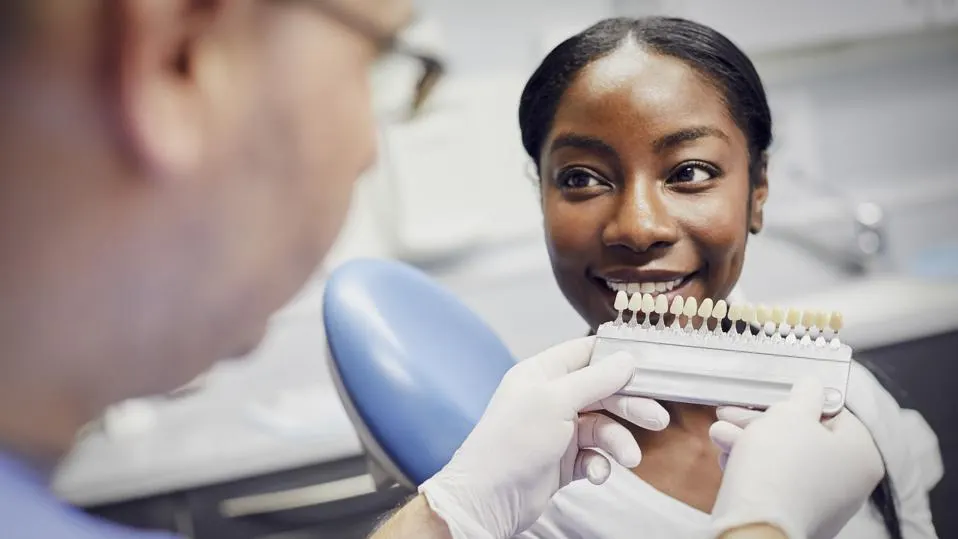Tooth whitening has become increasingly popular in recent years as people seek to enhance their smiles and boost their confidence. A bright, white smile is often associated with health and attractiveness, making tooth whitening a desirable option for many individuals. However, before diving into the world of tooth whitening, it’s important to understand the various methods available and the potential risks involved.
Understanding Tooth Discoloration
Causes of Tooth Discoloration
Tooth discoloration can occur for a variety of reasons. Extrinsic stains are caused by external factors such as coffee, tea, wine, and tobacco use. These substances can penetrate the enamel of the teeth, leading to surface stains that can be difficult to remove with regular brushing alone. Intrinsic stains, on the other hand, occur within the tooth structure and are often the result of factors like genetics, aging, or certain medications.
Different Types of Tooth Stains
Extrinsic stains are typically easier to address with tooth whitening products, as they are confined to the surface of the enamel. Intrinsic stains, however, may require more intensive treatment methods to effectively lighten the tooth from within. Understanding the underlying cause of tooth discoloration is crucial for determining the most appropriate whitening approach.
Common Tooth Whitening Methods
Over-the-Counter Whitening Products
Over-the-counter whitening products are widely available and can range from whitening toothpaste and mouthwashes to whitening strips and gels. These products often contain abrasives or bleaching agents that help to remove surface stains and lighten the overall shade of the teeth. While convenient, over-the-counter whitening products may take longer to produce noticeable results compared to professional treatments.
Professional Whitening Treatments
For those seeking faster and more dramatic results, professional whitening treatments administered by a dentist are often recommended. In-office whitening procedures typically involve the application of a high-concentration bleaching agent to the teeth, which is activated by a special light or laser. Take-home whitening kits prescribed by a dentist are another option, allowing patients to whiten their teeth in the comfort of their own home using custom-fitted trays and professional-grade bleaching gel.
Natural Remedies and DIY Methods
In addition to commercial whitening products, there are also natural remedies and do-it-yourself methods that some people swear by. These may include ingredients like baking soda, hydrogen peroxide, activated charcoal, or fruit peels. While these methods may offer some degree of whitening, it’s important to approach them with caution, as they may not be as effective or safe as professionally supervised treatments.
Risks and Safety Considerations
Potential Side Effects of Tooth Whitening
While tooth whitening is generally considered safe when performed under the guidance of a dentist, there are some potential side effects to be aware of. Common side effects may include tooth sensitivity, gum irritation, and temporary white spots on the teeth. These side effects are usually mild and temporary but can be managed with proper care and follow-up.
Precautions for Sensitive Teeth and Gums
Individuals with sensitive teeth or gums may be at a higher risk of experiencing discomfort or irritation during the whitening process. It’s important for these individuals to discuss their concerns with a dentist before proceeding with whitening treatment. Dentists can recommend special desensitizing products or alternative whitening methods to minimize discomfort and ensure a positive experience.
Importance of Consulting a Dentist Before Whitening
Before embarking on any tooth whitening regimen, it’s essential to schedule a consultation with a dentist to assess your oral health and determine the most appropriate treatment approach. Dentists can evaluate the underlying cause of tooth discoloration, identify any potential contraindications, and tailor a whitening plan to suit your individual needs and preferences. By seeking professional guidance, you can ensure safe, effective whitening results without compromising your oral health.
Tips for Effective Tooth Whitening
Proper Oral Hygiene Practices
Maintaining good oral hygiene habits is essential for maximizing the effectiveness of tooth whitening and preserving your results over time. Brushing your teeth twice a day with a fluoride toothpaste, flossing daily, and avoiding stain-causing foods and beverages can help prevent new stains from forming and keep your smile looking its best.
Choosing the Right Whitening Method for Your Needs
With so many whitening options available, it can be challenging to determine which one is best suited to your needs. Consulting with a dentist is the best way to ensure you choose the right whitening method for your specific circumstances. Your dentist can recommend the most appropriate treatment based on factors such as the severity of your discoloration, your budget, and your desired timeline for results.
Maintaining Results and Preventing Future Stains
Once you’ve achieved your desired level of whitening, it’s important to take steps to maintain your results and prevent future stains from occurring. This may involve periodic touch-up treatments, avoiding habits that contribute to tooth discoloration, and scheduling regular dental cleanings to remove plaque and tartar buildup. By incorporating these strategies into your oral care routine, you can enjoy a bright, white smile for years to come.
Understanding Google’s E-A-T Guidelines
Explanation of E-A-T (Expertise, Authoritativeness, Trustworthiness)
Google’s E-A-T guidelines are a set of criteria used to assess the quality and credibility of web content. E-A-T stands for Expertise, Authoritativeness, and Trustworthiness, and it plays a crucial role in determining how well a website ranks in search engine results. Content that demonstrates expertise in a particular subject, authority within its industry, and trustworthiness in its information is more likely to be prioritized by Google’s algorithms.
How E-A-T Applies to Dental Content and Advice
In the context of dental content, demonstrating expertise means providing accurate, up-to-date information backed by scientific research and professional experience. Authoritativeness is established through credentials, affiliations, and endorsements from reputable sources within the dental community. Trustworthiness is earned by being transparent, honest, and ethical in the presentation of information, as well as by providing references and citations to support claims.
Conclusion:
Tooth whitening can be an effective way to enhance your smile and improve your confidence. By understanding the causes of tooth discoloration, exploring the various whitening methods available, and prioritizing safety and effectiveness, you can achieve the bright, white smile you’ve always wanted. Remember to consult with a dentist before starting any whitening regimen and follow their recommendations for optimal results. With proper care and maintenance, you can enjoy a radiant smile that lights up the room.











